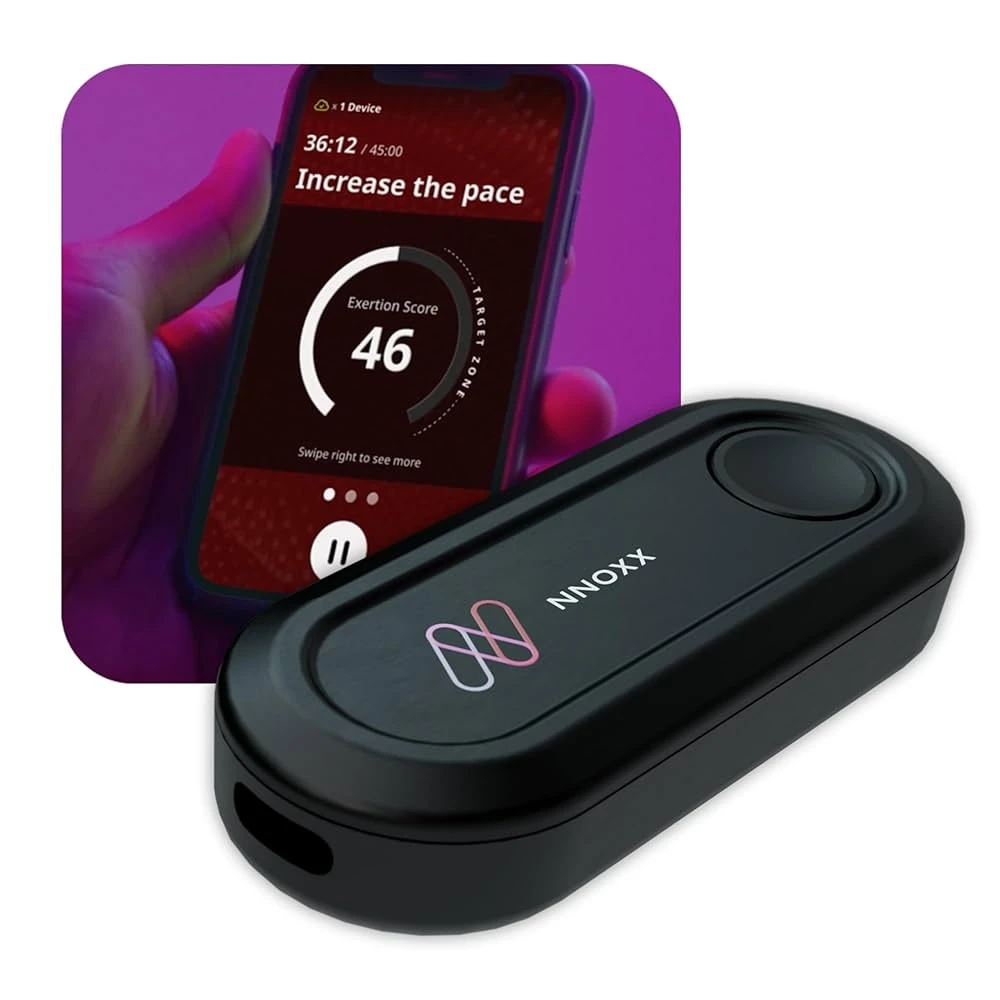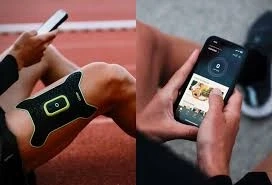What Is a Muscle Oxygen Monitor?
A muscle oxygen monitor is a small and smart device that helps athletes, fitness lovers, and even doctors measure how much oxygen is inside your muscles during rest or while exercising. Just like heart rate monitors help check your heartbeats, muscle oxygen monitors check how well your muscles are working by looking at oxygen levels.
Oxygen is very important for your body. Your muscles use it to make energy. When you exercise or work hard, your muscles use more oxygen. If they don’t get enough, you might feel tired, weak, or unable to perform well. That’s why knowing how much oxygen is in your muscles can help you train better, avoid injury, and recover faster.
This guide will explain everything about muscle oxygen monitors in very simple words. You will learn how they work, their benefits, how to use them, who can use them, and how to pick the right one. Whether you are a beginner or a professional, this article will help you understand how this tool can improve your health and fitness.
Let’s explore it step by step with easy-to-understand topics.
How Muscle Oxygen Monitors Work
A Muscle Oxygen Monitor works using light technology. It shines light into your muscle and then checks how much of that light comes back. This tells the device how much oxygen is in your muscle at that moment. It’s a painless and non-invasive way to see inside your body without using needles or blood.
Most devices use something called near-infrared spectroscopy (NIRS). This type of light can pass through your skin and reach your muscles. Oxygen in the muscles affects how this light behaves. The monitor reads these changes and tells you your oxygen level.
The reading is usually shown as a percentage. For example, if your monitor says 70%, it means your muscle is using 70% of its oxygen. This number can go up or down depending on your workout or recovery.
These devices usually connect to your smartphone or fitness watch. You can see real-time data while running, lifting weights, or even resting. Some advanced monitors also give graphs, alerts, and coaching tips based on your performance.
The main goal of a muscle oxygen monitor is to help you know when your muscles are working too hard or not enough. It helps avoid overtraining and supports better planning for rest, effort, and improvement.

Benefits of Using This Smart Device
Using a muscle oxygen monitor can give you many health and performance benefits. Let’s look at them in very simple terms.
1. Better Performance:
It helps you know when your muscles are ready to work harder or when to take a break. This helps you train smarter and avoid wasting energy.
2. Faster Recovery:
By knowing your oxygen levels, you can plan your rest times better. When oxygen levels return to normal, your muscles are ready again. This helps you bounce back quicker after workouts.
3. Avoid Injury and Fatigue:
Low muscle oxygen levels can be a sign of muscle stress or danger. The monitor helps you stop before your body gets too tired or hurt.
4. Train in the Right Zone:
You can use the monitor to stay in your ideal training zone, just like using a heart rate monitor. It tells you whether to go harder, stay steady, or slow down.
5. Personalized Data:
Every person is different. A muscle oxygen monitor gives you data based on your body, not general rules. This means your training becomes more personal and effective.
6. Real-time Feedback:
Most devices show live data, so you can change your activity immediately. It makes your workout more interactive and smarter.
Using this tool is like having a coach inside your muscle. It guides you without words, just numbers that tell the truth.
How to Use It Properly
Using a muscle oxygen monitor is not difficult. You just need to follow a few simple steps to get the best results.
Step 1: Choose the Right Spot
Usually, you place the monitor on large muscles like the thighs (quads or hamstrings) or arms (biceps or triceps). Make sure the skin is clean and dry before attaching it.
Step 2: Attach the Device
Use the strap or adhesive patch that comes with the monitor. Make sure it fits snugly but not too tight. It should not move while you’re training.
Step 3: Connect to App
Most monitors come with a mobile app. Connect the device using Bluetooth. The app shows live data on your screen.
Step 4: Start Activity
Begin your exercise while watching the oxygen levels. You will see how it changes with effort, rest, and pace. You’ll learn what your muscle likes and when it needs rest.
Step 5: Understand the Numbers
A high number (like 80%) means your muscles are not using much oxygen. A lower number (like 40%) means your muscles are working hard. By tracking this, you can improve performance.
Step 6: Analyze and Adjust
After your session, check your data. Most apps give you a graph or chart. Use it to plan your next workout smarter.
Tip: Use it regularly to get familiar with your body. The more you use it, the more you’ll understand what your muscles need.
Who Should Use This Monitor
Many people think muscle oxygen monitors are only for athletes, but that’s not true. This device can help many different types of users.
1. Professional Athletes:
They use it to train with precision. Whether in running, cycling, or lifting weights, it helps them reach peak performance.
2. Fitness Lovers and Gym-Goers:
Even if you’re not a pro, you can use it to know when your body is working too hard or just right. It helps you train efficiently and safely.
3. Rehabilitation Patients:
Doctors and therapists use it to help patients recovering from injury or surgery. It shows how well their muscles are healing and working.
4. Older Adults:
Muscle strength drops with age. Using this tool helps seniors understand their muscle condition and stay safe while walking, climbing stairs, or doing exercises.
5. Coaches and Trainers:
Trainers use this data to plan smart workout sessions for their clients. It gives a clear picture of how hard the body is working.
6. Health Professionals:
It is also useful for sports scientists, physiologists, and health researchers to study how muscles perform in different conditions.
This means almost anyone who wants to improve health, strength, or recovery can use a muscle oxygen monitor. It’s for everyone, not just champions.
Choosing the Best Monitor Model
Not all muscle oxygen monitors are the same. Here’s how you can pick the right one for your needs.
1. Accuracy of Readings
Choose a monitor that gives reliable and consistent data. Look for models with good reviews and scientific backing.
2. Comfort and Size
A device that is too bulky or uncomfortable may distract you during workouts. Lightweight, wireless monitors are best.
3. Battery Life
Go for a monitor that lasts long, especially if you train often. Good models offer 10 to 20 hours of use before recharge.
4. App Support
Check if it comes with a useful mobile app. It should show data clearly and help analyze it. Some even offer coaching tips.
5. Price and Features
High-end monitors have advanced features, but basic ones also work well. Pick what suits your budget and goals.
6. Compatibility
Make sure it works with your smartphone or smartwatch. Some models also sync with platforms like Strava or Garmin.
Popular Brands:
- Moxy Monitor
- Humon Hex
- BSX Insight
- Portamon
- Train.Red
Before buying, read customer reviews and watch YouTube demos. It helps you understand how it looks, feels, and performs in real life.
Tips to Improve Muscle Oxygen Levels
Once you start using a muscle oxygen monitor, you’ll want to keep your oxygen levels healthy. Here are some easy tips to do that.
1. Stay Hydrated
Water helps blood flow better, which brings more oxygen to your muscles.
2. Breathe Properly During Exercise
Focus on deep breathing, especially during hard workouts. More oxygen goes in, and more energy comes out.
3. Train With Intervals
Interval training helps improve how your body uses oxygen. It also builds stamina faster.
4. Get Enough Sleep
Your muscles repair and get stronger while you sleep. Better rest means better oxygen usage the next day.
5. Warm Up and Cool Down
Don’t skip your warm-ups and cool-downs. They help blood and oxygen move smoothly through your body.
6. Eat Iron-Rich Foods
Iron helps your blood carry oxygen. Foods like spinach, red meat, and lentils are great for muscle health.
7. Use the Monitor Regularly
The more data you collect, the more you learn. Use it during workouts, rest, and recovery to see full results.
These tips, along with your monitor, help you build stronger, healthier muscles day by day.
Conclusion: A Smart Tool for Smart Fitness
A muscle oxygen monitor may look like a small gadget, but it brings big changes to your fitness journey. It helps you see what’s happening inside your muscles, in real time. You no longer need to guess when to rest or push harder. The device tells you clearly.
This tool is useful for athletes, gym lovers, health patients, seniors, and even coaches. It makes workouts safer, smarter, and more successful. From beginners to pros, everyone can benefit from it.
By using it regularly and wisely, you can improve your training, avoid injuries, and stay healthy. Your muscles will thank you for it.
So, if you want to take control of your fitness and health, a muscle oxygen monitor is a smart step forward.
Frequently Asked Questions (FAQs)
1. Is a muscle oxygen monitor safe to use?
Yes, it’s very safe. It uses light technology that is non-invasive and does not harm the skin or muscles.
2. Can beginners use a muscle oxygen monitor?
Absolutely. It is easy to use and gives useful feedback for people at all levels, including beginners.

